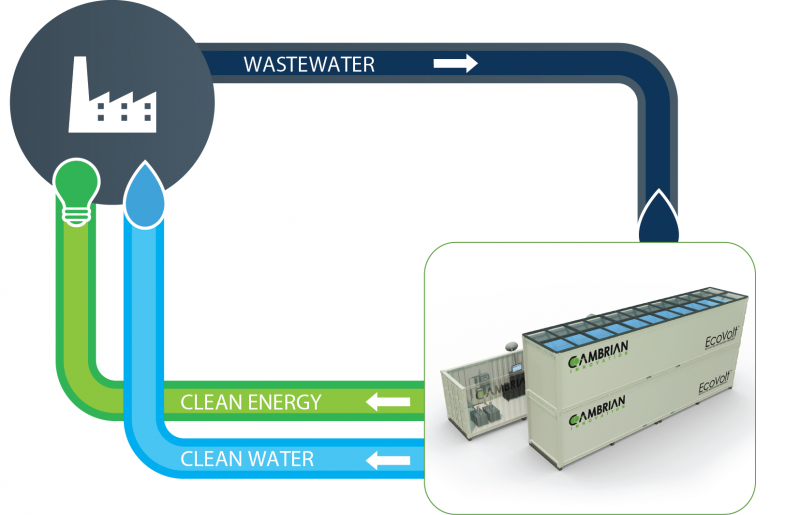Beer and Wine Makers Turn to Charged Microbes for Clean Water
Published on by Water Network Research, Official research team of The Water Network in Technology
Startup Cambrian Innovation has a new approach that seems to be catching on.
 About 50 miles north of San Francisco, a brewery is quietly using a new type of technology, originally created to be used on a space station, to clean 50,000 gallons of dirty wastewater a day and generate energy in the process.
About 50 miles north of San Francisco, a brewery is quietly using a new type of technology, originally created to be used on a space station, to clean 50,000 gallons of dirty wastewater a day and generate energy in the process.
At the back of the brewery of Lagunitas Brewing Company, in Petaluma, Calif., three large shipping containers house an unusual design of electrically charged microbes that consume pollutants in beer wastewater and generate usable biogas.
The technology was created by an MIT spinout called Cambrian Innovation, which is beginning to grow its customer list considerably in Northern California.
The Boston-based startup announced that it will build one of its water-cleaning, and energy-generating, systems for its first winery: Napa Valley’s Rombauer Vineyards. The winery, famous for its chardonnays, will use the tech to treat all of its wine-making wastewater while also generating 30 kilowatts of electricity and heat.

While Cambrian Innovation doesn’t quite have the allure of the Tesla brand just yet, its technology is becoming attractive because it’s returning customer investment in as little as two to three years. That’s thanks to the high costs associated with wastewater and energy for breweries and wineries, as well as some state and utility incentives.
Since the company has routinely been able to do this -- it has systems installed or under construction in eight locations -- it is now able to offer its technology to its customers as a service, with no money down and a monthly fee, backed by a $30 million fund. Lagunitas is using the service option to build another Cambrian system at a new brewery in Southern California.
Bugs in a box
From the street, the silver tanks and metal pipes at the Lagunitas Brewing Company in Petaluma look like any standard, large brewery. Walking closer, the classic brewery smell of malty warm hops pervades the air.
But weave behind the tanks and enter one of the shipping containers marked “EcoVolt” and you’ll see, and smell, something pretty different. Brian Hemphill, Cambrian Innovation’s senior director of operations, leads me into a shipping container that acts as the control room for Lagunitas’ water cleaning system.
On a screen he points out how much methane is coming off of the reactors -- called EcoVolts -- and the pH levels. Instead of hops, the smell inside the container is more like decaying matter. Hemphill, who joined the company several months ago, says the technology inside the containers made him realize that “wastewater is a form of energy.”
Inside the EcoVolt treatment containers live two types of microbes which are coated on anodes and cathodes. One of the bugs, called an “exoelectrogen,” eats the organic pollutants in the wastewater and generates electricity.
The other microbes consume the electricity and carbon dioxide and produce biogas (also called methane). The process bears the rather daunting moniker “electromethanogenesis,” and it’s the core innovation that drives the company’s technology.

The EcoVolts clean the dirty water, which the industry calls “high-strength” wastewater. It’s commonly created by industrial processes and contains more organic components than typical wastewater generated by a household
Overall, the Lagunitas Brewery in Petaluma is decreasing its water footprint by 40 percent and lowering its transportation costs of its former wastewater considerably. Between 60 percent and 70 percent of the water in the brewing process is being reused. And there’s significantly less wastewater that the city has to deal with.
Read more at: Green Tech Media
Media
Taxonomy
- Wastewater Use
- Water Reuse & Recycling
- Water Footprint
- Technology
- Industrial Water Reuse
- Reuse
- Water & Wastewater
- Water & Wastewater
- Water Footprint